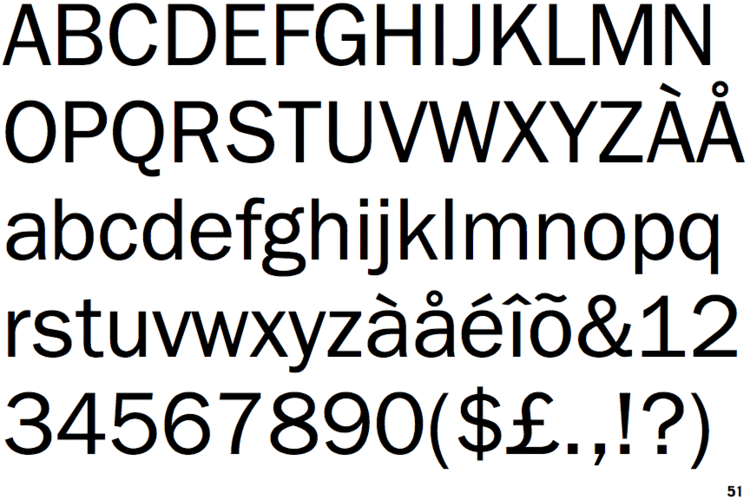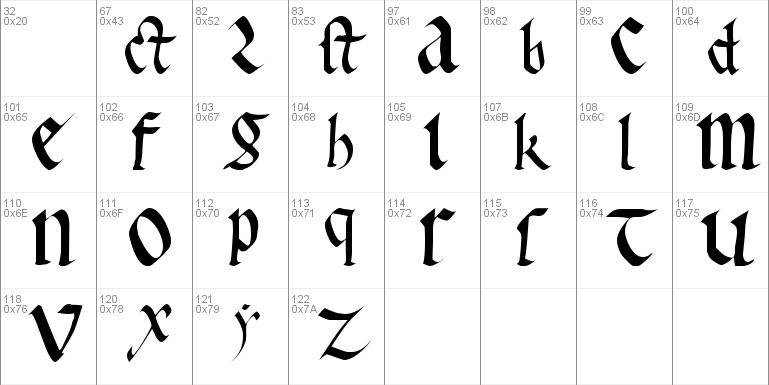

Each weight has a corresponding italic with an unusually steep angle, echoing Ludlow’s original matrices and producing a striking effect when used for emphasis or display purposes. We expanded it to seven weights, Thin to Black, and gave them character sets sufficient for modern use, including text figures, fractions, arrows, and extended Latin support. Our interpretation, A2 Record Gothic, focuses on the pared-down initial cut, with its clear forms and economical stature. As a result, Ludlow’s unusual hybrid family is a rather charming anomaly, one that has gone unnoticed among contemporary graphic designers because it hasn’t been properly revived – until now. Over the next three decades, additional styles were added by many different hands, serving more diverse purposes, with each new iteration adapting to the fashions of its time - the Bold and Heavy Condensed can be compared to Akzidenz-Grotesk and Folio, the Medium-Extended is akin to Helvetica.
#Early gothic bold font mac#
Type historian Mac McGrew speculates that its name comes from its initial purpose: small headings on ruled record sheets.

Much earlier, however, came Ludlow Typograph’s Record Gothic, first released circa 1927 in small sizes (6–12pt). Pick up any magazine, newspaper, book jacket, record cover, or all manner of corporate collateral and it was likely to include gothic type. And, indeed, they were used for almost everything.

By the mid-1950s, ATF’s gothics had coalesced as Alternate, Franklin, and News Gothic, multipurpose families with a size, weight, and width for nearly any purpose. This was especially true in North America, where Morris Fuller Benton had devised a wide range of workmanlike sans serifs for the American Type Foundry. No longer a “grotesque” oddity reserved for posters and other display uses, the sans was now considered a clear and readable workhorse, capable of replacing serif type entirely. Frutiger) genres, but it is the American gothic of the early 20th century that is perhaps the most utilitarian and least pretentious of the sans classification.Īs of 1930, in many parts of the Latin-writing world, the sans serif had begun to establish itself as a common type style. Those seeking familiarity and neutrality often reach for the neo-grotesque (e.g. Of course, considering the 500-year history of typography, this is a relatively new paradigm, but it’s now so ingrained in the minds of Western readers it’s as if it was always so. Helvetica Neue or Untitled Sans would make wonderful choices.These days, we expect informational content to be set in sans-serif type. Any sans would be a great option too, just to balance out the traditional look. Try lovely fonts such as Baskerville, Delight, or Cheesecake. Wondering what to pair with this wedge- serif? Surprisingly, it goes well with fonts similar to it.

Related: What Is The Difference Between OTF and TTF?
#Early gothic bold font download#
For bold and regular styles, download them from Fonts Geek at no cost.
#Early gothic bold font free#
For the FREE version of this font family, check out Cufon Fonts. You can also purchase just one style for a reasonable amount. Get the entire Copperplate font family by URW Type Foundry at MyFonts for a nominal fee. Manier, Boucherie, Millenia, and Aviano). What makes this font unique is that, its serifs are thinner and smaller compared to others in the same category (e.g. The term ‘wedge’ is due to the shape of the serif (other shapes are slab, rounded, and hairline). Ĭopperplate is tagged by many typographers as a wedge- serif because of its tiny, narrow projections (serifs) at the end of its letter strokes. If you prefer the Copperplate Gothic appearance but would love a version with lowercase characters, try Balthazar free from Google Fonts. However, you may find other styles, like condensed, shaded, or bold. The original works by Goudy were all capitals (no lowercase) as in many of the adaptations today. It’s evocative of copperplate engravings that were once widely used until the early part of the 20th century. But perhaps its most charming feature is its lettering style. Goudy and distributed by American Type Founders (ATF) in 1901, the Copperplate font was an amalgamation of influences. Much like the hard work that went with the making of Copperplate Gothic.ĭesigned by Frederic W.


 0 kommentar(er)
0 kommentar(er)
